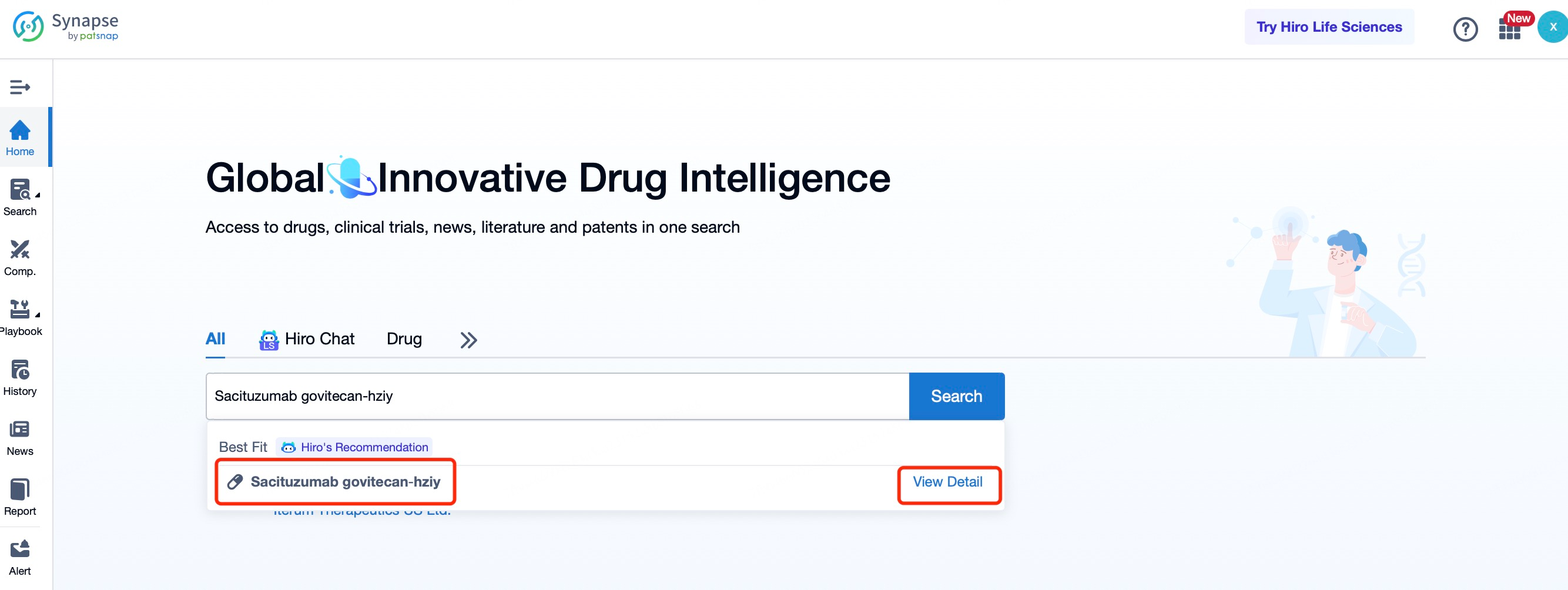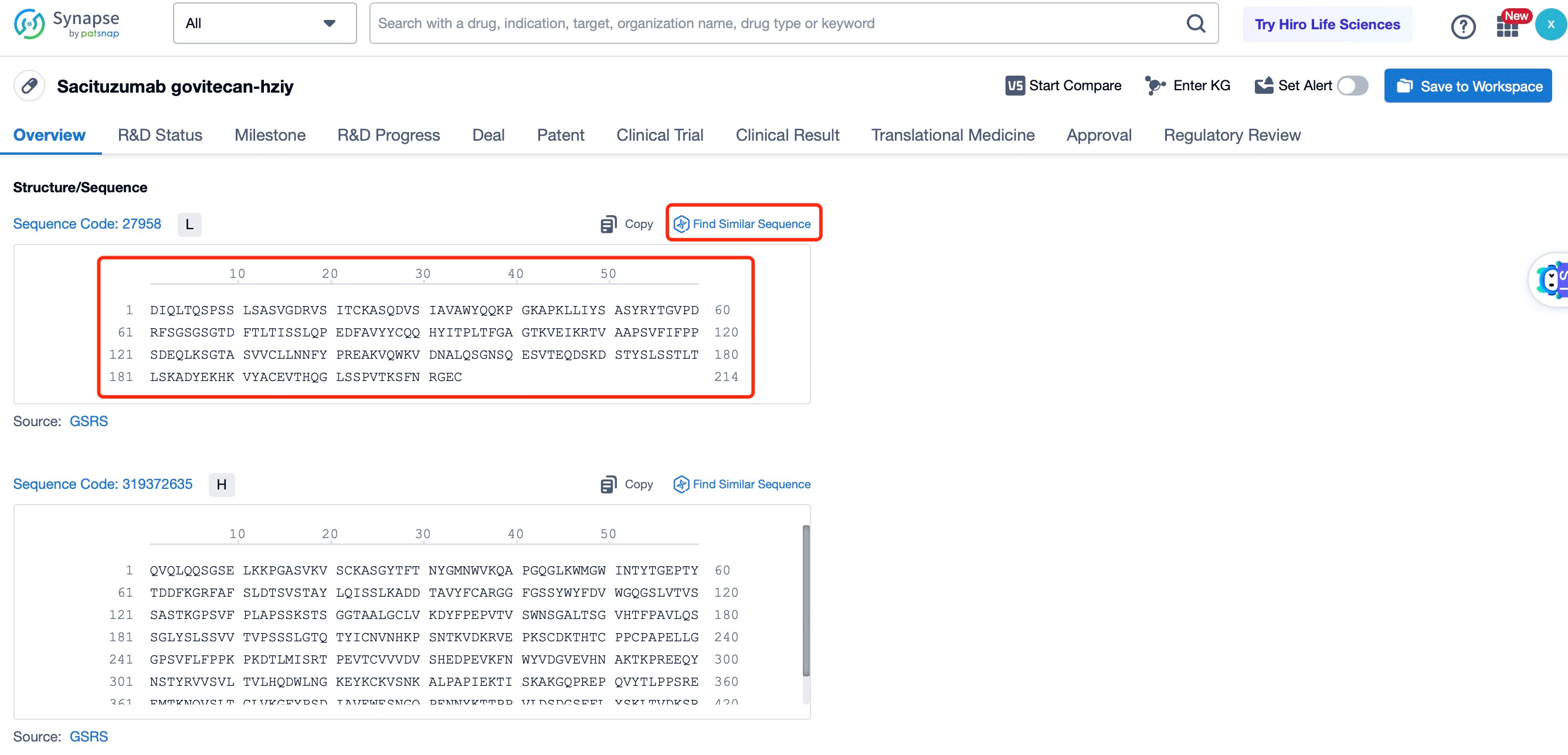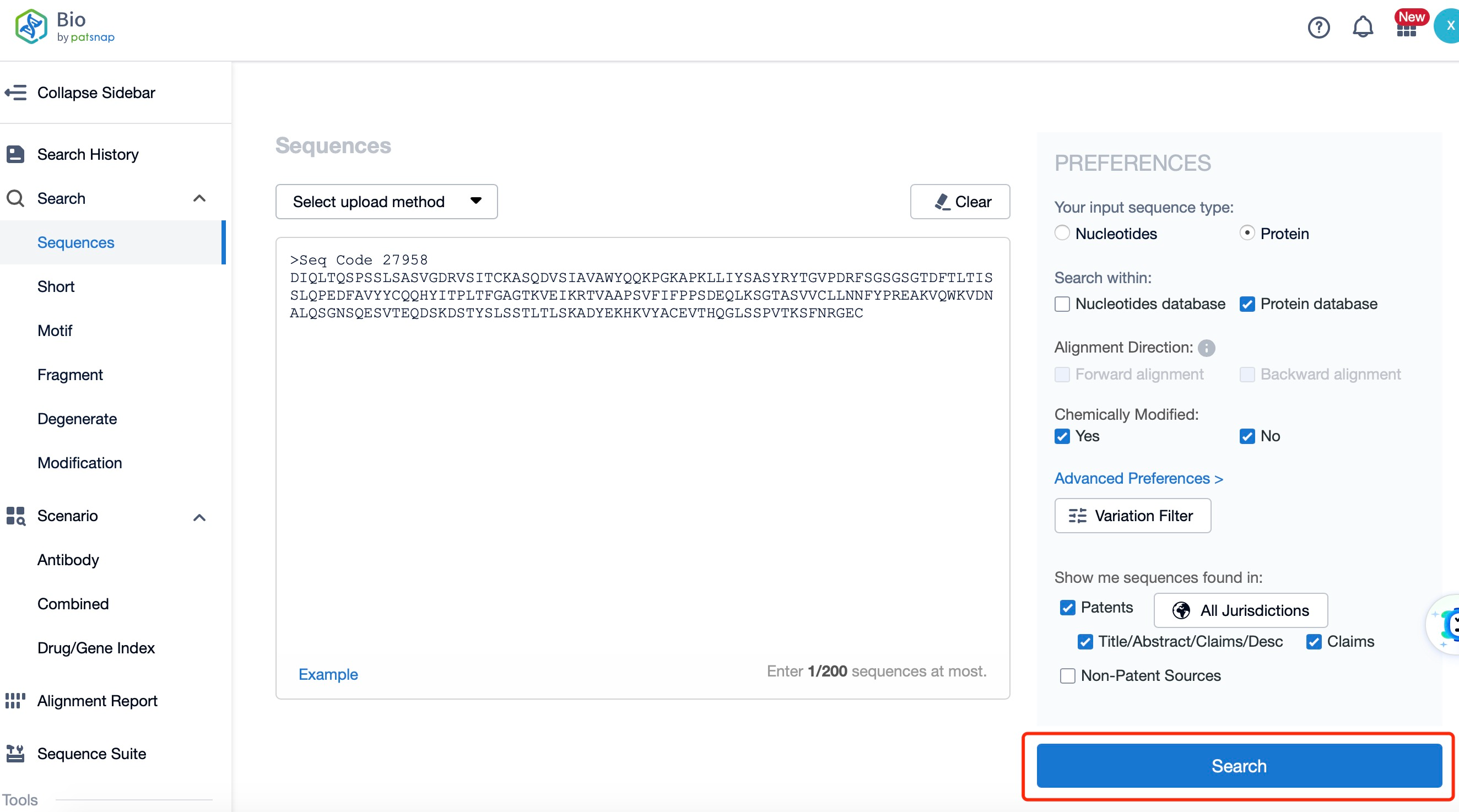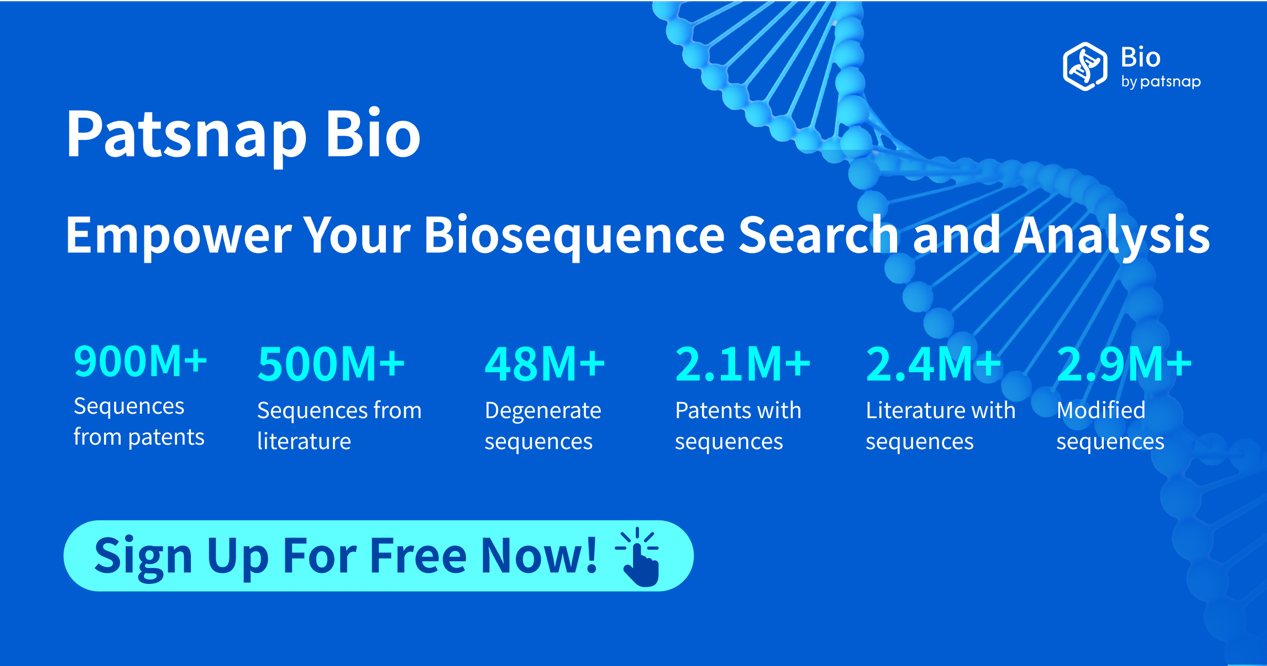How to find the core components of Sacituzumab govitecan-hziy?
Sacituzumab govitecan-hziy, also known as Trodelvy, is an antibody-drug conjugate (ADC) developed by Immunomedics, now part of Gilead Sciences. It targets the Trop-2 antigen, which is overexpressed in various solid tumors, including triple-negative breast cancer (TNBC) and metastatic urothelial cancer. As a novel therapeutic agent, Sacituzumab govitecan-hziy is designed to deliver a potent cytotoxic payload specifically to tumor cells expressing Trop-2, thereby minimizing toxicity to healthy tissues.
Summary of Research Progress of Sacituzumab govitecan-hziy
The research progress of Sacituzumab govitecan-hziy has been substantial. The drug works by binding to Trop-2 on the surface of cancer cells, internalizing the ADC, and releasing the cytotoxic payload within the cell. This mechanism allows for targeted delivery of the drug, enhancing its efficacy while reducing systemic side effects. Sacituzumab govitecan-hziy has received accelerated approval from the U.S. Food and Drug Administration (FDA) for the treatment of adult patients with metastatic TNBC who have received at least two prior therapies for metastatic disease. It has also been approved for the treatment of adult patients with locally advanced or metastatic urothelial cancer who have previously received platinum-containing chemotherapy and either programmed death receptor-1 (PD-1) or programmed death-ligand 1 (PD-L1) inhibitor therapy. Globally, the drug is also under review in other regions, with ongoing efforts to secure approvals in additional markets.
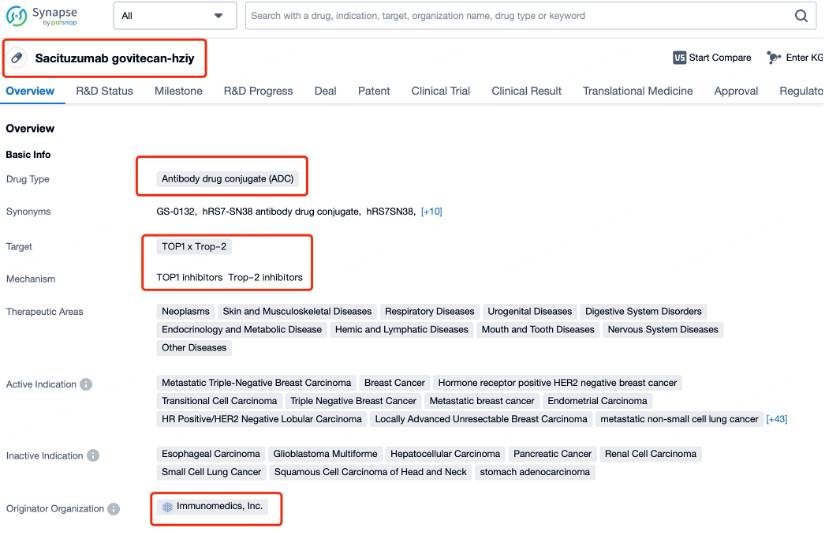
The global competition in the ADC market is intense, with several other ADCs targeting various cancers at different stages of development. Key competitors include Roche's Kadcyla (T-DM1) for HER2-positive breast cancer and Seattle Genetics' Adcetris (brentuximab vedotin) for Hodgkin lymphoma and systemic anaplastic large cell lymphoma. Despite this competition, Sacituzumab govitecan-hziy stands out due to its specific targeting of Trop-2 and its potential in treating TNBC and urothelial cancer, areas with limited treatment options. Clinical trials have shown promising results, particularly in patients with metastatic TNBC and urothelial cancer who have progressed on or after multiple lines of therapy.
Structural Characteristics of Sacituzumab govitecan-hziy
The overall structural characteristics of Sacituzumab govitecan-hziy are designed to optimize its therapeutic potential. The ADC consists of three main components: the antibody, the linker, and the cytotoxic payload. The antibody is a humanized IgG1 monoclonal antibody that binds to Trop-2 with high affinity and specificity. The linker is a cleavable linker that ensures the payload remains attached to the antibody during circulation and is released only upon internalization into the target cell. The cytotoxic payload is SN-38, a topoisomerase I inhibitor derived from irinotecan, which is highly potent and effective in inducing cell death.
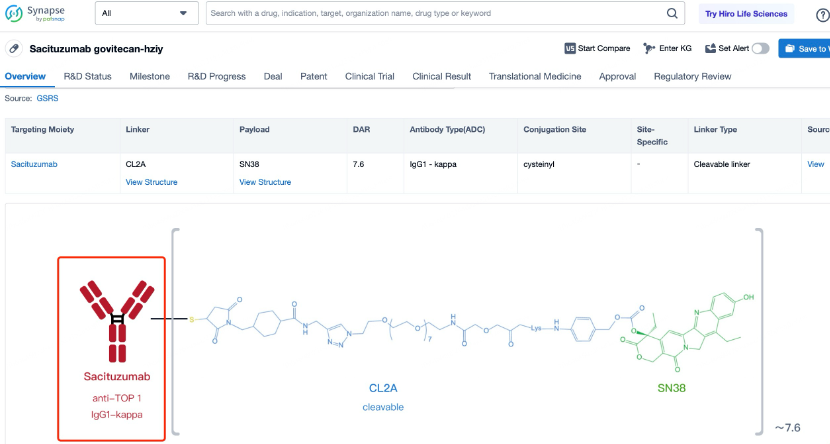
The selection and advantages of the antibody in Sacituzumab govitecan-hziy are crucial for its effectiveness. The antibody used, known as hRS7, is a humanized IgG1 monoclonal antibody that binds to Trop-2 with high affinity and specificity. Trop-2 is a transmembrane glycoprotein that is overexpressed in various solid tumors, including TNBC and urothelial cancer. The high affinity and specificity of hRS7 ensure that the ADC can effectively target and bind to Trop-2-expressing cancer cells, thereby maximizing the delivery of the cytotoxic payload. Additionally, the antibody has been engineered to enhance its stability and reduce immunogenicity, making it suitable for repeated dosing. The high binding affinity and low immunogenicity of the antibody contribute to the overall safety and efficacy of Sacituzumab govitecan-hziy. The antibody also has a favorable pharmacokinetic profile, with a long half-life that allows for less frequent dosing, improving patient convenience and compliance.
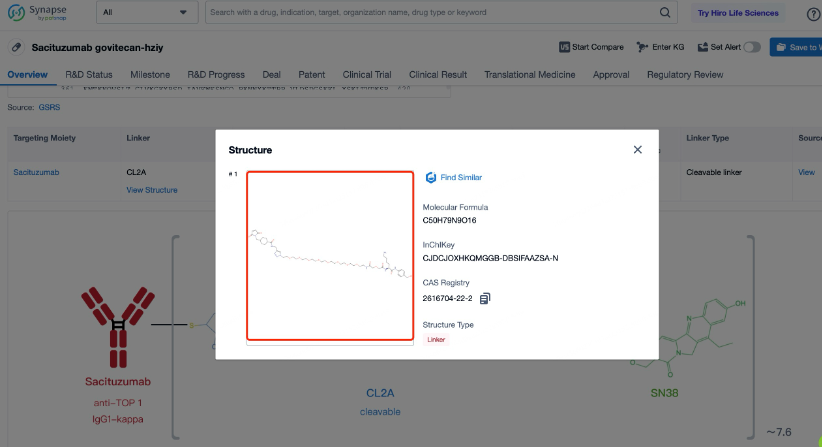
The linker in Sacituzumab govitecan-hziy is a key component that ensures the stability of the ADC in circulation and the controlled release of the payload inside the target cell. The linker used is a cleavable linker based on a hydrazine carbamate structure. This linker is stable in the bloodstream but can be cleaved by lysosomal enzymes once the ADC is internalized into the cell. This design minimizes the risk of premature release of the cytotoxic payload, which could cause off-target toxicity. The cleavable nature of the linker also allows for the efficient release of the payload within the tumor cell, ensuring maximum therapeutic effect. The linker is designed to maintain the integrity of the ADC during systemic circulation, preventing the payload from being released before reaching the target cells. This stability is crucial for minimizing systemic toxicity and ensuring that the drug reaches its intended target. The hydrazine carbamate linker also provides a high drug-to-antibody ratio (DAR), typically around 7.6, which enhances the therapeutic index of the ADC.

The cytotoxic drug payload in Sacituzumab govitecan-hziy is SN-38, a topoisomerase I inhibitor derived from irinotecan. SN-38 works by inhibiting the activity of topoisomerase I, an enzyme that is essential for DNA replication and repair. By inhibiting topoisomerase I, SN-38 causes single-strand breaks in DNA, leading to replication fork collapse and double-strand breaks, which ultimately result in cell cycle arrest and apoptosis in rapidly dividing cancer cells. SN-38 is chosen for its high potency and ability to induce cell death at low concentrations. The payload is linked to the antibody through the cleavable linker, ensuring that it remains inactive during circulation and is only activated once inside the target cell. This design enhances the safety and efficacy of the ADC by minimizing systemic toxicity. SN-38 is particularly effective against cancer cells because it targets DNA, which is essential for cell division and survival. By disrupting DNA replication and repair mechanisms, SN-38 prevents cancer cells from completing the cell cycle, leading to cell death. The high potency of SN-38 allows for the use of lower doses of the ADC, further reducing the risk of side effects. Additionally, SN-38 has a broad spectrum of activity against various cancer types, making it a versatile choice for the development of ADCs.
Summary and Prospect
In summary, Sacituzumab govitecan-hziy represents a significant advancement in the treatment of triple-negative breast cancer (TNBC) and metastatic urothelial cancer, particularly for patients with metastatic disease who have progressed on or after multiple lines of therapy. The drug's unique mechanism of action, combined with its optimized antibody, linker, and cytotoxic payload, positions it as a promising therapeutic option. Ongoing clinical trials continue to evaluate its safety and efficacy, and if successful, Sacituzumab govitecan-hziy has the potential to become a standard treatment for these cancers, addressing a critical unmet medical need. Future research will focus on expanding its use to other Trop-2-expressing cancers and exploring combination therapies to further enhance its therapeutic benefits. The detailed selection and engineering of the antibody, the stability and cleavability of the linker, and the high potency of the cytotoxic payload all contribute to the overall effectiveness and safety of Sacituzumab govitecan-hziy, making it a promising candidate in the field of targeted cancer therapy.
How to find the the core components of an ADC drug?
In Patsnap Synapse and Patsnap Bio, you can find the sequence and latest research and development advances of all ADC drugs.
Taking Sacituzumab govitecan-hziy as an example, First, you can log in to Patsnap Synapse, enter ' Sacituzumab govitecan-hziy ' in the search box and click to view the details. On the details page, you can find the basic information and research progress of Sacituzumab govitecan-hziy.
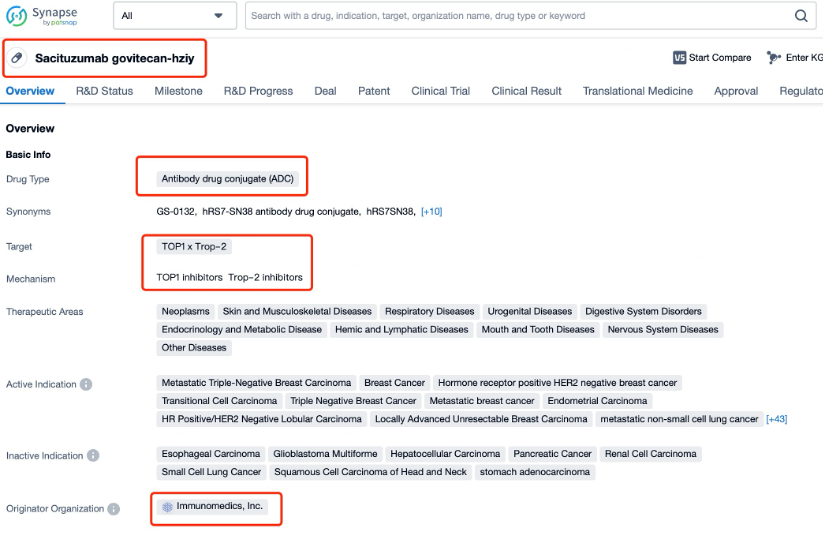
After entering the details page, drop down to find the core Structure information of ADC drug and click view Structure in the Linker section to find the structure and type of ADC drug Linker.
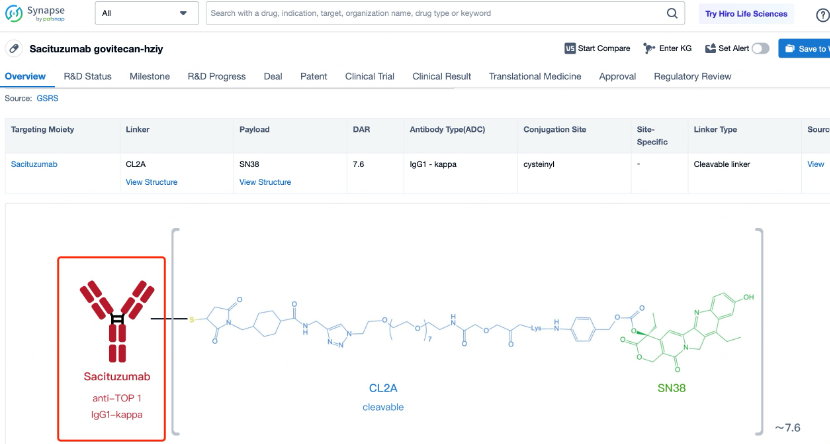
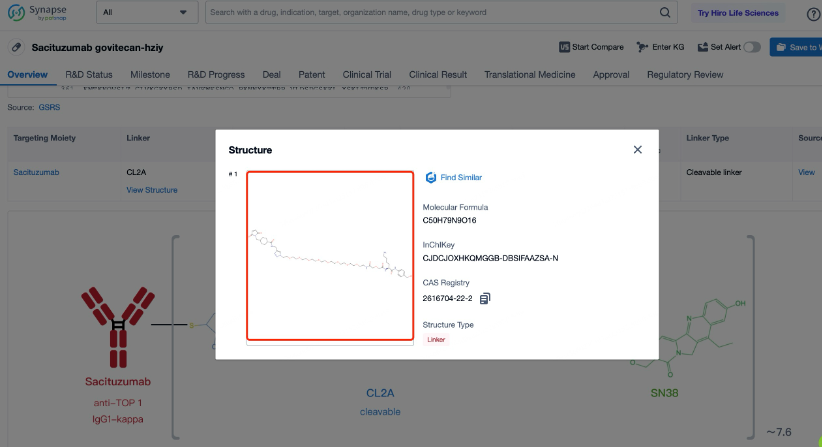
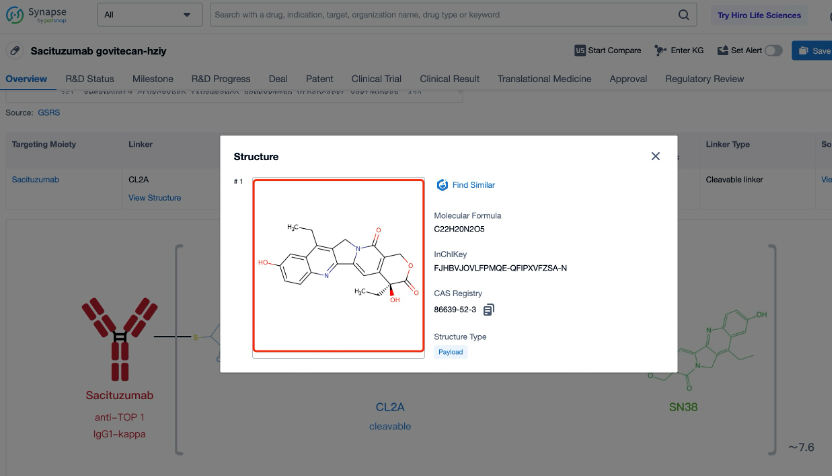
The details page also lists the complete sequence information of the antibody part. By clicking on "Find Similar Sequence", you can be redirected to Patsnap Bio to search for similar sequences of the antibody.
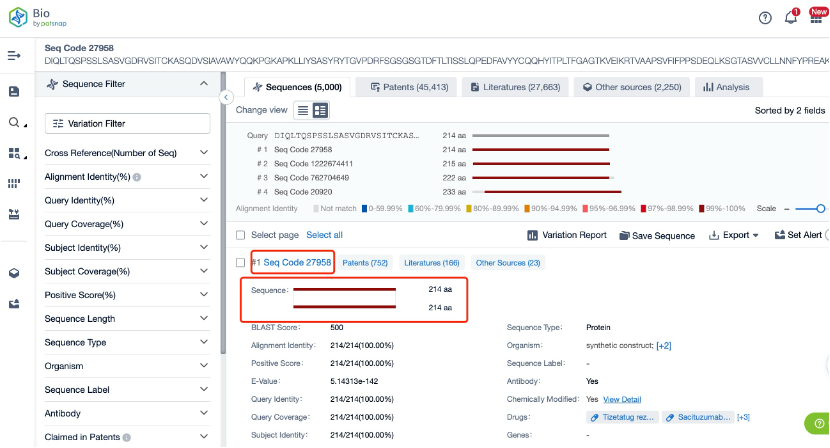
Clicking on the sequence name will provide you with all the basic information of that sequence.
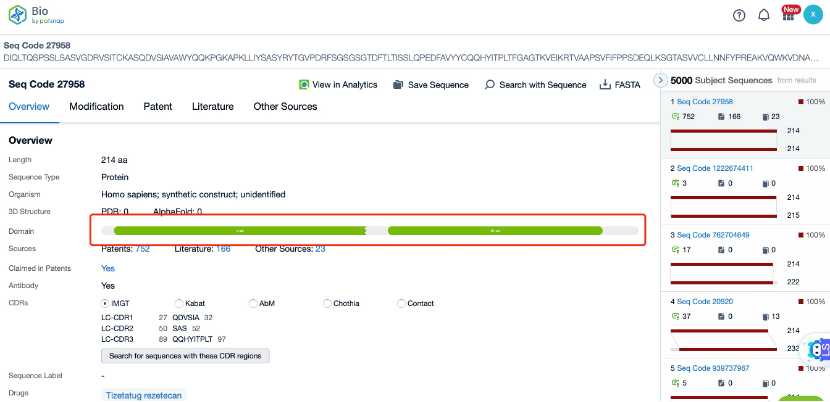
Patsnap Bio helps you turn weeks into minutes with cutting-edge AI-enabled tools built to master the complexities of sequence retrieval and automate IP analysis with precision and ease.
